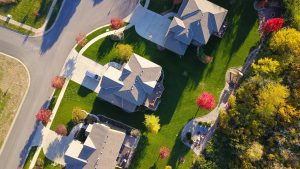 According to the 2015-2016 National Pet Owners Survey, 65% of US households have a pet, with almost 78 million of those pets being dogs. Dogs share our lives and our homes and make both more enjoyable. But, playful pups can cause home damage, sometimes injuring themselves along the way. Use these six ideas for protecting your home from pet damage.
According to the 2015-2016 National Pet Owners Survey, 65% of US households have a pet, with almost 78 million of those pets being dogs. Dogs share our lives and our homes and make both more enjoyable. But, playful pups can cause home damage, sometimes injuring themselves along the way. Use these six ideas for protecting your home from pet damage.
Table of Contents
Carry Pet Insurance
Pets cause home damage for lots of reasons, including medical ones: they don’t feel well, they’re injured, or they’re unfixed. Many homeowners aren’t able to address these concerns right away due to cost. Home damage often follows. An unfixed male dog, for example, will start marking territory inside. Pet insurance is a simple way to plan for the damage a pet’s medical issues may cause. According to paigeandcampbell.com, pet insurance policies may cover accidental injuries, illness, behavioral issues, and hereditary issues.
Keep Pets Entertained
Bored pets learn to entertain themselves. With some dogs, this may look like barking or pacing, which is annoying but not damaging. But, for many dogs, boredom looks like chewing on furniture or digging holes in the carpet. To avoid this, make sure your dog gets regular exercise, teach him or her tricks, and provide toys for entertainment.
Try Doggie Daycare
For extra energetic pooches, a walk every day, and some toys may not cut it. These dogs have such high energy or intelligence that they entertain themselves with toys for an hour, and then often turn to destructive things to entertain themselves. If this sounds like your dog, doggie daycare might be a good solution. Dog daycares are exactly what they sound like—a place for dogs to play and hang out during the day, where they’ll be entertained and supervised.
Address Separation Anxiety
Sometimes, your dog isn’t being destructive because he or she is bored. Sometimes it’s separation anxiety. This is a condition in which the dog experiences varying levels of anxiety when their caretakers leave. Dogs express separation anxiety in destructive behaviors like house soiling, chewing, digging, escaping, barking, etc. The ASPCA offers advice for treating dogs with all levels of separation anxiety. It’s best to address separation anxiety as soon as you notice it because when left unchecked, the anxiety can escalate and potentially lead to extreme damage to your home and/or injury to your pet.
Housetrain Your Dog
Dog’s don’t know to pee outside unless you train them and continue reinforcing it throughout their lives. So, to prevent damage to your home from pet urine, house-train. Dog urine can penetrate even sealed wood floors, leaving behind stains and that horrible ammonia smell. And, contrary to popular belief, repairing repeat urine damage isn’t as easy as cleaning the area with a good bleach spray. Advice on pet-stained floors from This Old House says that, most times, wood and carpet has to be replaced, as no amount of cleaning or sanding will cure the problem.
Give Pets a Safe Outdoor Space

If possible, create a safe outdoor space for your dog to enjoy. Provide shade, food, water, shelter, and things to keep him or her entertained. Also, don’t use this area just for when you leave. Teach your dog to enjoy their outdoor space even when you are home. Doing this gives your pet a space to relax or play away from all the temptations in a home.
Great pet owners are ones who can roll with their dog’s needs and try new things to address problems like destructive behavior. These ideas can help great pet owners keep their pets safe and protect their homes at the same time.